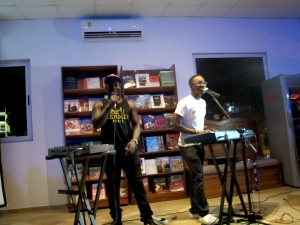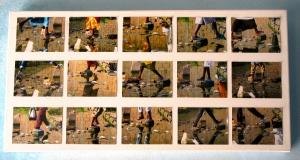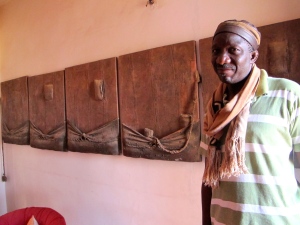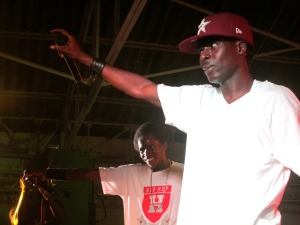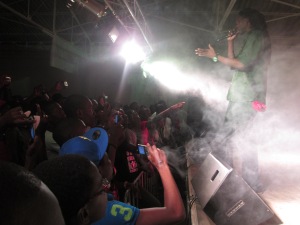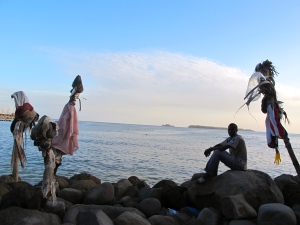By Robin Riskin
While eyes turn to the Dak’Art Biennale for this month’s arts and culture in the capital city of Senegal, one of the most interesting Dak’Art OFF exhibitions can be found in the historic neighborhood of Médina, at the southern west end of Dakar.
Médina, an historic quarter rich with culture and community, this year celebrates its 100th anniversary. As part of the celebration, a group of young artists from Médina came together to present the festival Saxalart.
The catch? The exhibition takes place inside people’s homes.
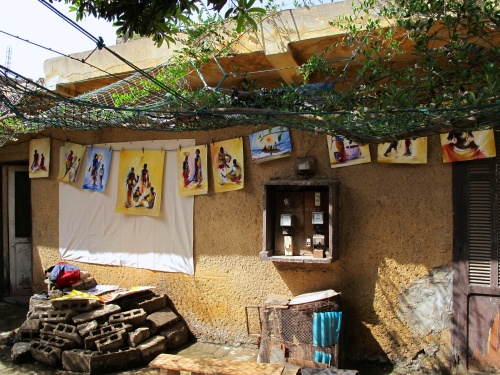
Khassim Mbaye makes a performance with 100 cards to commemorate Médina’s 100th anniversary for the Saxalart Festival in Dakar.
Image (c) Babacar Traoré Doli
The idea? To bring art into people’s daily spaces, to commemorate Médina’s intellectual and cultural history, and to revive the neighborhood’s spirit of openness and hospitality, with one festival, 24 homes and many streets, and about 60 artists.
Which artists are participating? Greats like Babacar Traoré, Viyé Diba, Zulu M’Baye, Ismaila Manga, Fatou Kandé Senghor, Moussa Traoré, Ndoye Douts, Louis Bassène, and more, alongside up-and-coming talents like Babacar Traoré Doli, Pape Diop, Khalil Art, Bira Kasé, and others who are exhibiting for the first time.
From an installation on the subject of street sellers that blends painting and poetry with laundry and electric lines, by Mel-odile and Thierno Seydou Sall; to a project that brings community rituals into public conversation via film, photography, and performance, by Fatou Kandé Senghor; to digital art-photography that plays off words and language of Médina streets, by Babacar Traoré Doli; the works explore daily life and work in Médina with a kind of reverence and pride.
The main Saxalart festival will take place in December. This month, the group offered a tease preview as part of Dak’Art OFF.
I sat down for a conversation with two of the project’s leaders, Director General Abdoul Sall, and Artistic Director Babacar Traoré Doli.
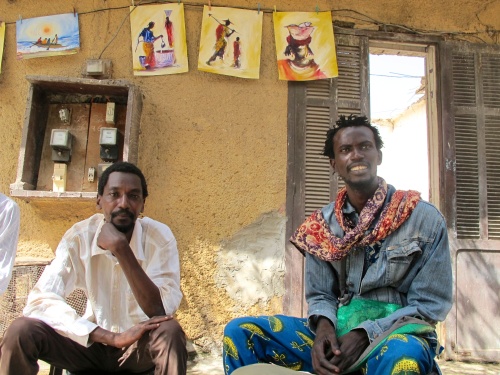
Abdoul Sall and Babacar Traoré Doli, Director General and Artistic Director of the Saxalart Festvial in Médina, Dakar.
Image (c) Robin Riskin
Question & Answer:
Robin Riskin: Can you tell us a bit about Saxalart?
Abdoul Sall: Saxalart is a festival for the hundredth anniversary of Médina. The project pulls together numerous artists with the aim of bringing art inside people’s homes.
The idea is to involve the people so that they become the cultural mediators. They receive the public and present the exhibition to them, as well as the history of [their] houses in which we are exhibiting. Each house has a history, and it is important for us to discover our neighborhood, especially on the occasion of its 100th anniversary.
RR: What kind of activities and works does Saxalart involve?
AS: Since March, we’ve started workshops in video animation, photography, sculpture, and sous-verre (glass painting) with children from the neighborhood. We’ve led tambabanlous photo walks with 20 photographers. Where we’re sitting right now, the artist Khassim Mbaye is in the middle of making a performance with one hundred cards to mark the 100th anniversary of Médina. There will be sculpture exhibitions, photography works, installations, and artistic and musical performances. Many activities and mediawill be presented up until the end of the year.
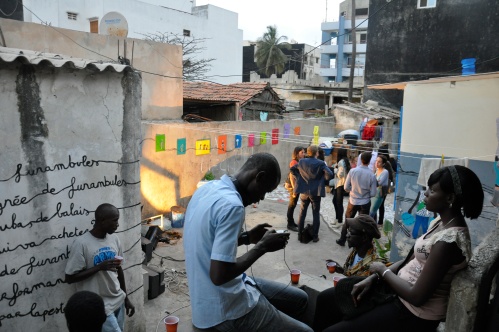
Mel-odile and Theirno Seydou Sall’s collaborative installation blends painting and poetry with laundry and electric lines.
Image (c) Babacar Traoré Doli
RR: What is the significance of the homes in which works are exhibited?
AS: We chose homes that have a history: the first houses that were constructed in the neighborhood, and houses where important personalities from the neighborhood have lived.
The house where we are now is one of the oldest houses in Médina, constructed by El Hadj Amadou Ba Founda. Today, his son Elhadj Amadou Tiléré Ba is a cultural mediator for Khassim Mbaye’s exhibition, receiving people and presenting the exhibition. This house was also the headquarters of the Jaaraf de Dakar, which is one of the great clubs of the city.
This house has received great figures in Senegalese political, cultural, intellectual, and athletic life, and it is a house where tea is free every day from 7 in the morning until 9 at night. Each time someone enters, he is served tea. It is a house of welcome, a house that receives. And this is also the spirit of Médina.

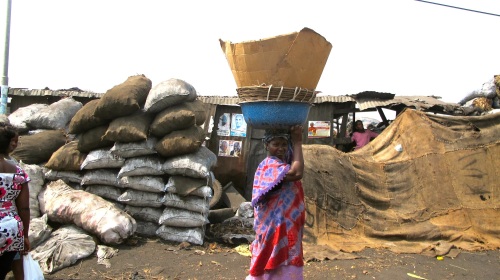
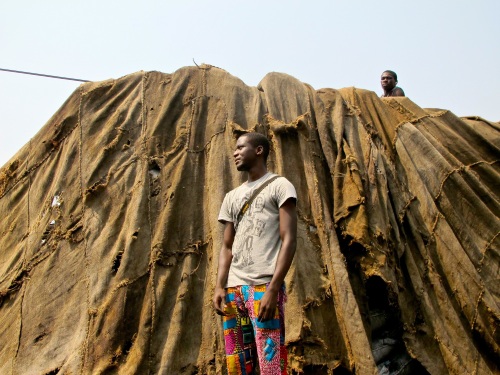
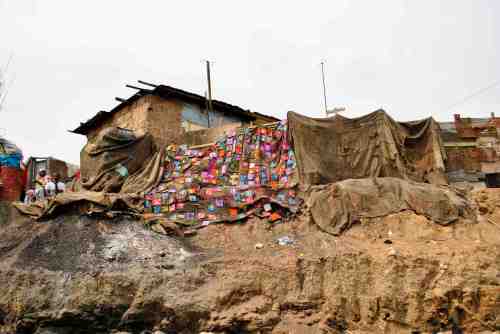

![Paapa synthed smooth tunes at Ind!e Fuse with Accra[dot]Alt Dec. 14](https://framework5.files.wordpress.com/2013/01/paapa-synthed-smooth-tunes-at-inde-fuse-dec-14.jpg?w=225&h=300)
